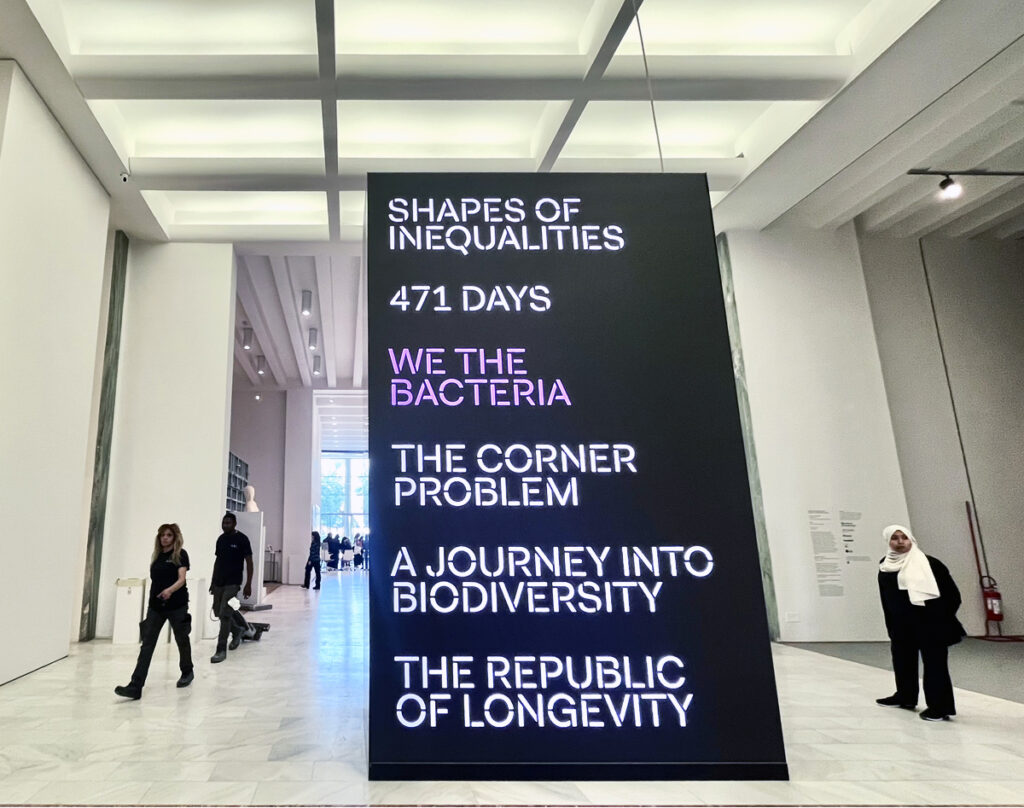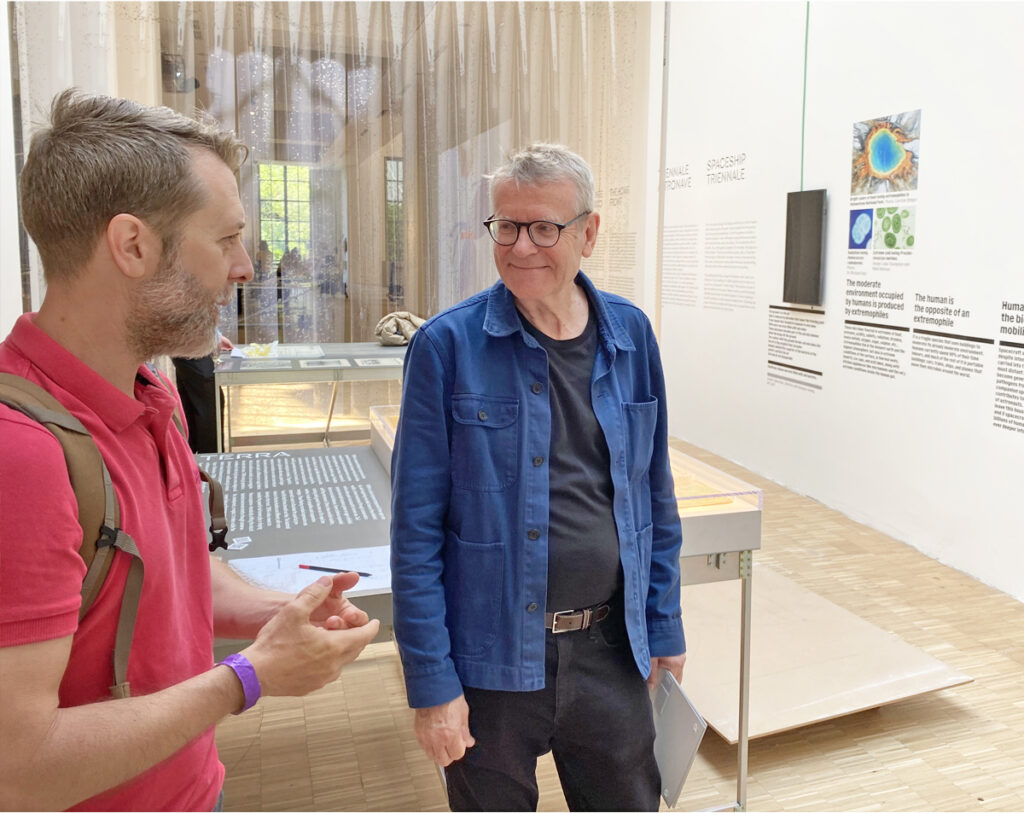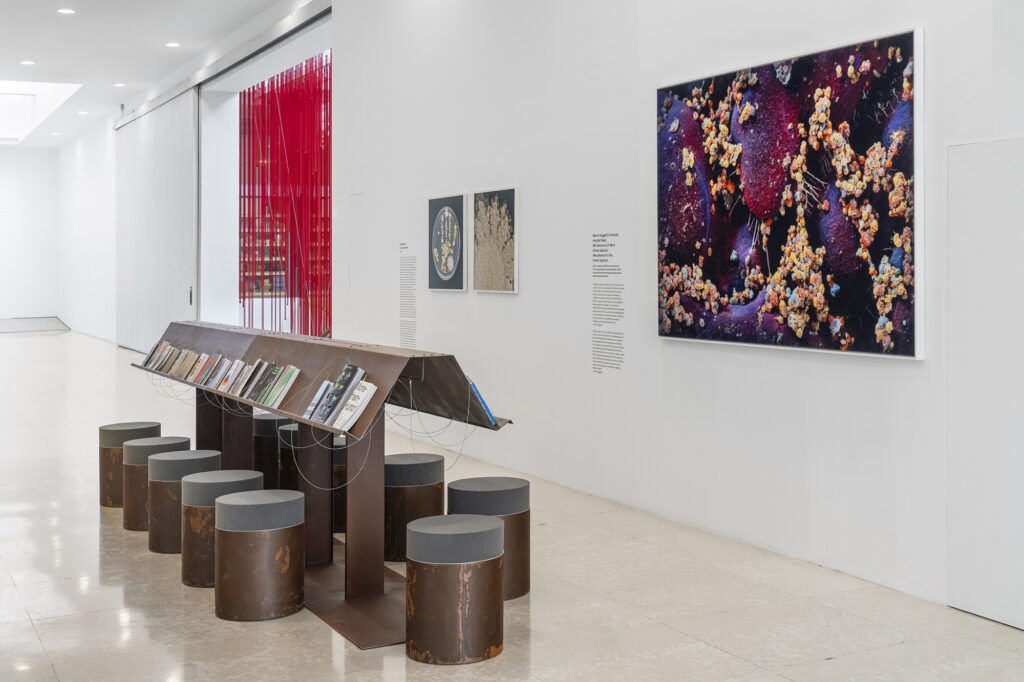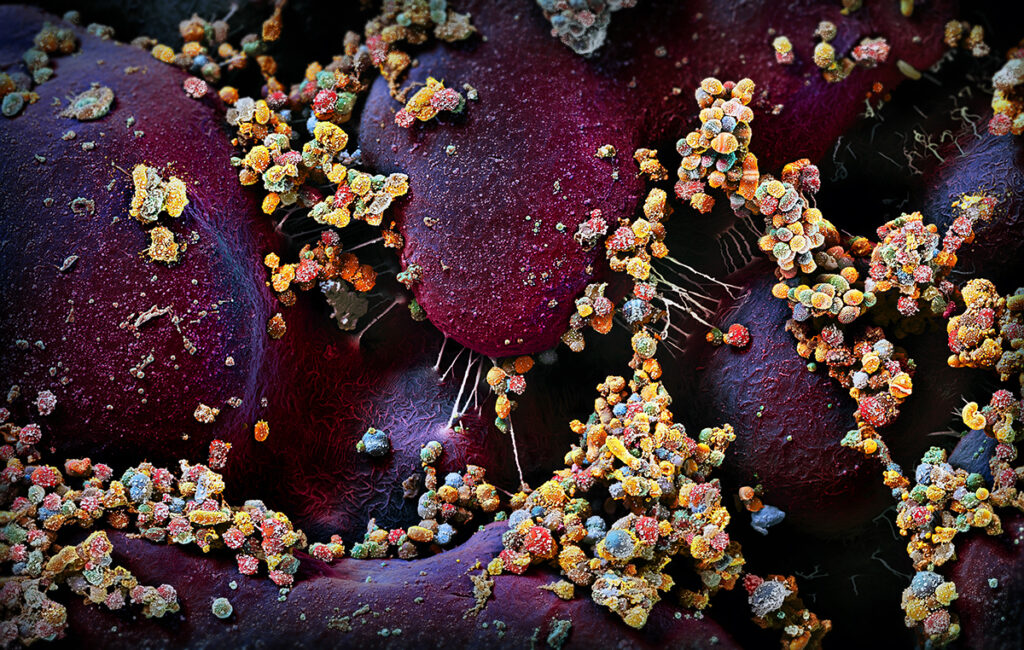We the Bacteria, 24th Triennale Milan, Italy
The Milan Triennale opened May 13th, 2025 with the 24th International Exhibition Inequalities, on view through November 9, 2025. As part of this collective project, Princeton University School of Architecture professor Beatriz Colomina and Mark Wigley of Columbia University are curating the major exhibition We the Bacteria: Notes Toward Biotic Architecture.

We the Bacteria is a follow-up to Colomina and Wigley’s celebrated Are We Human? exhibition. It explores the intersection of bacteria and architecture, emphasizing how they have been deeply intertwined from Neolithic times to today. The exhibition rethinks inequalities through the lens of bacteria, exploring alternative spatial, political, ethical, architectural, and urban models inspired by microbial communities.
We the Bacteria operates as both a mirror and a projector. It invites visitors to see themselves as recently arrived trans-species creatures suspended in a planetary world made and maintained by microbes for more than four billion years. It then unfolds in a multi-media circuit that presents a new architectural history of the last 10,000 years from the point of view of bacteria, culminating in contemporary work by architects, designers, artists, engineers, conservationists, doctors, activists, scientists, and philosophers.

The final 3D Petri dish space is inhabited by full-scale living bacterial installations fueled by urine, manure, soil, spit, and sunlight that generate new kinds of architecture and ways of collaborating with microbes. The gallery is no longer an isolated hygienic space. It pulsates with diverse interacting microbial ecologies and fills with the stains and smells of life.
Works by internationally renowned designers such as Kazuyo Sejima, Alejandro Aravena, Elizabeth Diller, Boonserm Premthada, and Amos Gitai are on display. Swiss photographer and scientist Martin Oeggerli contributes a poetic yet precise visual narrative of the microbial realm. A series of smaller works gently introduces visitors to their microbial condition, while his centerpiece, The Microbiome of a Kiss, confronts them with an intimate, life-sized portrait of bacterial exchange. Oeggerli’s work transforms invisible life into tangible presence, inviting reflection on the unseen architectures that shape our bodies and environments

